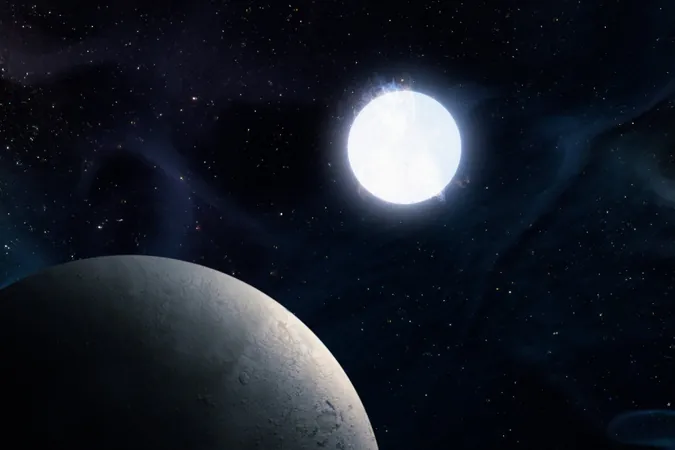
Will Earth Survive the Sun's Final Goodbye? Stunning Study Offers Hope for Our Planet!
2024-09-27
Future of Earth and the Sun's Demise
According to a groundbreaking study, the fate of Earth in the distant future may not be as dire as previously thought when our Sun exhausts its fuel. As astronomers explore a distant star system around 4,000 light-years away, they found evidence that rocky planets could survive the cosmic chaos following the demise of their host stars.
The Role of Microlensing in Discovering New Planets
This exciting revelation hinges on an astronomical phenomenon known as microlensing, which occurs when the gravity of massive celestial bodies warps light from more distant stars. Researchers at UC Berkeley made a remarkable discovery when they analyzed light bending around a white dwarf—a star that has run out of its nuclear fuel—leading them to identify the remnants of a star system with two orbiting objects: a brown dwarf and a terrestrial planet slightly larger than Earth.
Implications for Earth's Future
This rocky exoplanet could be a glimpse into the potential future of our own planet. Current predictions suggest that about 6 billion years from now, our Sun will exhaust its hydrogen fuel. As it transitions from a main-sequence star to a red giant, it will expand dramatically, potentially engulfing Mercury and Venus. Yet, the fate of Earth remains uncertain.
Mars vs. Earth: Who Will Survive?
Interestingly, while Mars might escape this fiery demise, Earth's survival will depend on the size of the expanding red giant. Will Earth be flung into the depths of space like a cosmic castaway, or might it linger in a stable orbit, much like the distant rocky planet discovered by astronomers?
Immediate Concerns: Life on Earth
However, be prepared for more immediate concerns; researchers assert that life on Earth will cease to exist long before it faces this solar catastrophe. In approximately 1 billion years, the temperature will rise due to the Sun’s aging process, causing the oceans to evaporate and initiating a runaway greenhouse effect, fundamentally altering our planet's conditions.
Resilient Planets Around Dying Stars
What adds to this intriguing narrative is that the existence of these surviving planets around a dying star offers fresh insights: the demise of a star does not necessarily lead to the extinction of its orbiting planets. In fact, other recent studies have shown resilient gas giants thriving in extreme conditions near red giants, unveiling possibilities of life or habitable conditions in uncharted territories.
A Hopeful New Era for Humanity?
One of the most tantalizing possibilities raised by the findings is that if humanity manages to survive long enough, we might find refuge on the icy moons of Jupiter and Saturn as the Sun transitions into its red giant phase. These moons, which contain frozen water, could potentially become habitable locations, opening doors to a new era of human exploration.
Conclusion: Hope in the Cosmos
In conclusion, while our time on Earth may be fleeting, the cosmic tapestry is filled with mysteries and surprises that keep us hopeful. The future might not be as bleak as it seems. What do the stars have in store for us? Only time will tell! Keep your eyes on the skies—you never know what cosmic adventures await!









 Brasil (PT)
Brasil (PT)
 Canada (EN)
Canada (EN)
 Chile (ES)
Chile (ES)
 España (ES)
España (ES)
 France (FR)
France (FR)
 Hong Kong (EN)
Hong Kong (EN)
 Italia (IT)
Italia (IT)
 日本 (JA)
日本 (JA)
 Magyarország (HU)
Magyarország (HU)
 Norge (NO)
Norge (NO)
 Polska (PL)
Polska (PL)
 Schweiz (DE)
Schweiz (DE)
 Singapore (EN)
Singapore (EN)
 Sverige (SV)
Sverige (SV)
 Suomi (FI)
Suomi (FI)
 Türkiye (TR)
Türkiye (TR)